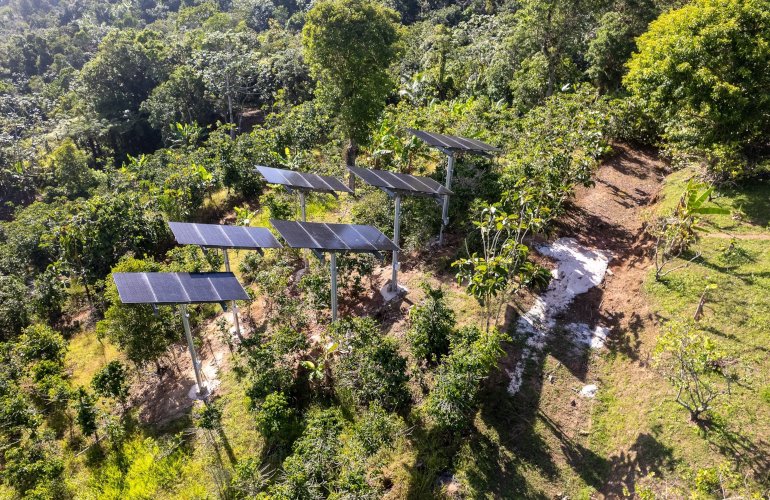Pole-Mount Agrovotaics Elevate Puerto Rico Coffee Farm Resilience
Nestled in the lush mountains of Adjuntas, Puerto Rico, Hacienda Berdiel Torres isn’t just another coffee farm—it’s a case study in energy innovation. Owner Miguel Berdiel faced a paradox: ideal growing conditions paired with crippling energy costs. The solution? A pole-mount agrivoltaic system that’s rewriting the playbook for hurricane-prone agriculture.
Why Pole-Mount Agrivoltaics? The Unlikely Hero
Ground mounts hog space. Rooftops buckle under hurricane winds. But pole-mounted solar panels? They’re the Goldilocks solution—elevated to avoid shading crops, yet sturdy enough to withstand Category 4 winds. Berdiel’s 45-kW array uses bifacial modules (those double-sided solar panels that catch light bouncing off coffee plants) from Nextracker, perched atop galvanized steel poles.
The Coffee-Energy Symbiosis
Here’s where it gets clever: Partial shade from panels reduces heat stress on Arabica plants—a crop notoriously finicky about temperature. Early data shows 15% higher bean yields under the dappled-light conditions. Meanwhile, the system powers hydroponic greenhouses with SolarEdge inverters, slashing diesel generator use by 80%.
Hurricane-Proofing 101: More Than Just Bolts
‘Hurricane-resistant’ gets thrown around loosely, but this system did its homework. The secret sauce? A combination of helical pile foundations (those screw-like anchors used for boardwalks) and dynamic tilt technology. When winds exceed 75 mph, panels automatically shift to a 60-degree angle—like a sailboat tacking against the wind.
The Battery Conundrum
No, they didn’t splurge on a Tesla Powerwall. Instead, the farm uses a demand-shifting approach. Excess solar charges a bank of lesser-known but rugged POMCube batteries during daylight, powering critical irrigation pumps during peak rate hours. It’s not sexy, but at $0.32/kWh island rates? Pure pragmatism.
Beyond Berdiel: The Ripple Effect
This isn’t just about one farm. Puerto Rico’s energy crisis—precipitated by PREPA’s crumbling grid—has spurred a quiet revolution. Over 40 local farms are now exploring similar setups, aided by USDA grants for rural energy. The kicker? Agrivoltaics qualify under both agricultural and renewable energy funding streams.
The Maintenance Myth
‘Solar means more work’ was Berdiel’s initial fear. Reality check: robotic cleaners from Ecoppia handle panel dusting, while coffee pruning crews simply work around the poles. Total extra labor? About 3 hours monthly. Not bad for guaranteed energy amidst the next Maria.
What Utilities Don’t Want You to Know
Net metering battles rage globally, but Puerto Rico’s unique Act 17 mandates buybacks at retail rates. With solar + storage ROI now under 4 years (thanks to federal tax credits), this model could gut diesel dependence—if regulators don’t cave to lobbyists.
The takeaway? Agrivoltaics aren’t just stacking functions—they’re rewriting rural economies. And for once, the little guy’s winning.






